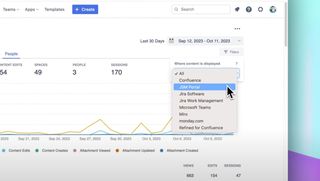Atlassian Confluence is a powerful collaboration platform that is used by organisations all over the world. With Confluence, teams can create, share, and collaborate on content and store a wide variety of files including documents, spreadsheets, and presentations as attachments.
Site search analytics refers to the process of collecting and analysing data about how users interact with a site's search function. By analysing this data, organisations can gain insights into how users are searching for information, what they are searching for, and whether or not they are finding what they need. These insights can be used to improve the search function and ultimately make it easier for users to find the information they need.
So, how can organisations use site search analytics in Confluence?
Here are a few key steps:
Set up analytics tracking
The first step in site search analytics is to set up tracking so that you can collect data about how users are interacting with the search function. For Premium and Enterprise editions of Confluence, search analytics is available as a feature, but for Free and Standard editions, analytics is not provided.
For most Confluence users, we therefore recommend installing and configuring our product Google Analytics in Confluence which provides Site Search Analytics as part of a complete analytics package.
Analyse search terms
Once you have configured Google Analytics in Confluence, it will begin data collection for all site search terms. You can then start analysing the search terms that users are using to find information within Confluence. This can help you understand what users are looking for and whether or not they are finding it. For example, if you notice that users are frequently searching for a specific term but not finding the information they need, you may need to adjust your content to better address that topic.
Analyse search results
In addition to analysing search terms, it's also important to analyse search results. This can help you understand whether or not users are finding the information they need when they search within Confluence. For example, if there are no results, or too many for each search term, you may need to adjust the content to better address the user's needs.
Enhance your workflows with David Simpson Apps
Discover powerful apps and integrations for monday.com, Atlassian, and Microsoft 365. Streamline processes, embed analytics, and boost collaboration.
Explore appsUse insights to improve search function
Finally, once you have analysed search terms and results, you can use the insights you have gained to improve the search function within Confluence.
This might include:
- adjusting page titles or content to better match user intent
- better match the language used to that used in search results
- creating new content to address frequently searched topics
- reorganising existing content to make it easier to find.
On our documentation website, we actively monitor the search results using Google Analytics in Confluence and create new documentation pages to cater for the exact search terms that are being used by end users. This can only be a good thing for both our support team and our end users.
Site search analytics is an essential tool for organisations that want to make the most of Confluence's search function. By analysing user behaviour and using insights to improve the search function, organisations can ensure that users are able to find the information they need quickly and easily, ultimately improving collaboration and productivity across the organisation.
Try Google Analytics in Confluence for free on the Atlassian Marketplace today.
Photo by Miguel A Amutio on Unsplash






